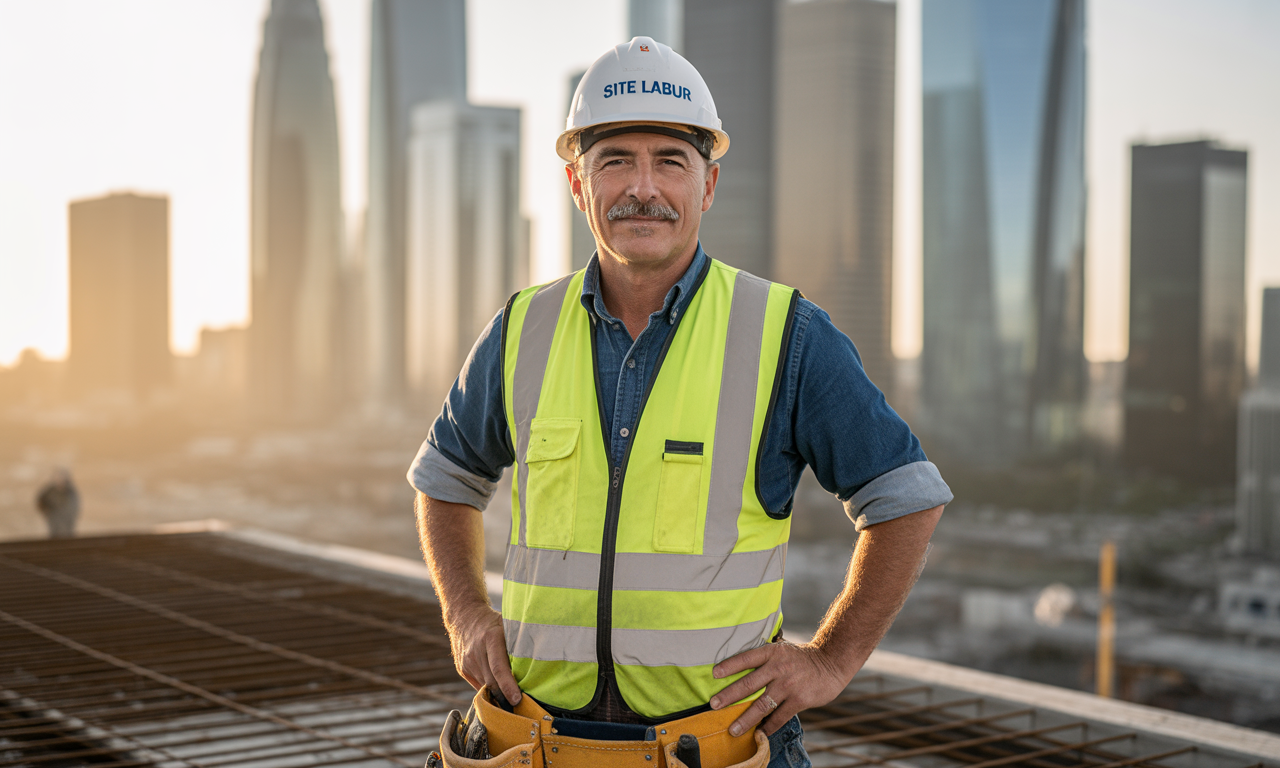Stay Seen and Safe: A Comprehensive Guide to Selecting the Best Construction High Visibility Workwear Clothing for Your Crew in June 2025
 In the bustling world of construction, where safety and productivity go hand in hand, there’s one principle that remains timeless: visibility saves lives. With industry standards constantly evolving and new technologies emerging, understanding how to select the best construction high visibility workwear clothing in 2025 is crucial. Whether you manage a large construction crew or oversee a small team, choosing the right hi vis apparel isn’t just about meeting regulations—it’s about ensuring your workers get home safe every day.
In the bustling world of construction, where safety and productivity go hand in hand, there’s one principle that remains timeless: visibility saves lives. With industry standards constantly evolving and new technologies emerging, understanding how to select the best construction high visibility workwear clothing in 2025 is crucial. Whether you manage a large construction crew or oversee a small team, choosing the right hi vis apparel isn’t just about meeting regulations—it’s about ensuring your workers get home safe every day.
Understanding the Importance of High Visibility Workwear
Construction sites are high-risk environments teeming with hazards—moving vehicles, heavy machinery, low light, and unpredictable weather conditions increase the risk of accidents. High visibility clothing acts as the first line of defense, ensuring every worker is easily spotted by colleagues, drivers, and equipment operators, especially in low-light or high-traffic scenarios.
Why It Matters:
- Reduces accidents and injuries: Enhanced visibility drastically lowers the likelihood of being struck by vehicles or machinery.
- Boosts compliance: Meeting safety standards minimizes legal risks and potential fines.
- Promotes team confidence: Workers feel safer, increasing productivity and morale.
Key Standards and Regulations for 2025
ANSI/ISEA 107-2025 and EN ISO 20471
Two major global standards regulate high visibility clothing for construction: ANSI/ISEA 107 (North America) and EN ISO 20471 (Europe). As of June 2025, these have seen notable updates:
- ANSI/ISEA 107-2025: Introduces stricter luminance mandates, enhanced retroreflective material performance, and clearer garment labeling.
- EN ISO 20471:2024: (latest revision) Specifies class categories based on risk, environment, and required visible surface area.
What Do These Classes Mean?
- Class 1: Lowest visibility; for off-road, less risky environments.
- Class 2: Good for moderate-risk sites; roadside work or complex construction zones.
- Class 3: Maximum visibility; for highway, nighttime, or high-traffic situations.
Always select the appropriate class based on your crew’s worksite and tasks.
Types of High Visibility Clothing for Construction Work
Modern high visibility workwear comes in various forms. The right choice depends on weather, job duties, and worker comfort.
Most Common Items:
- Hi Vis Vests: Lightweight, easy to layer; great for mild weather.
- Hi Vis Jackets and Parkas: Insulated, windproof, sometimes waterproof; must have compliant hi vis surfaces.
- Hi Vis Shirts and Sweatshirts: Ideal for moderate climates and tasks.
- Hi Vis Trousers and Overalls: Protects lower body, essential for maximum visibility.
- Hi Vis Rain Gear: Essential for wet climates—ensure pores for breathability.
- Hi Vis Hard Hats and Accessories: Hard hats, gloves, even hi vis neck gaiters or bands for added safety.
Pro Tip:
Layering options ensure comfort and compliance year-round. Choose modular systems designed for easy layering without blocking reflective areas.
Essential Features to Look for in Hi Vis Workwear
To maximize safety and durability, focus on these must-have features:
Certified Reflective Tape
Wide, strategically placed strips made from premium retroreflective material—ensure certification to current ANSI/EN standards.
Fluorescent Fabric
High-visibility colors (lime, yellow, orange-red) aren’t just bright—they’re engineered to stand out by day, dusk, or dawn.
Breathability and Comfort
Look for moisture-wicking, lightweight fabrics for summer and thermal linings for winter.
Weather Resistance
Construction doesn’t stop for rain or cold. Opt for water-resistant or waterproof options with welded seams.
Durability
Reinforced stitching, abrasion-resistant panels, and heavy-duty zippers stand up to rugged use.
Functional Design
Pockets, adjustable cuffs, ventilated backs, and easy-access zippers make work easier—and safer.

Custom Branding
Many suppliers offer logo printing without compromising compliance—a great way to promote company identity.
The Latest Innovations in High Visibility Apparel (June 2025)
The industry has seen dramatic advances in recent years, with 2025 delivering more than just basic safety:
Smart Reflective Technology
Cutting-edge hi vis workwear now integrates LED light strips for added visibility—automatic activation in low light or on command. Some even pair with smartphones for remote control.
Sustainable Materials
Expect to see increased use of recycled polyester and responsibly sourced fibers, reducing environmental impact while maintaining safety standards.
Antimicrobial and Odor-Resistant Fabrics
New treatments ensure all-day freshness and hygiene, especially important in multi-shift or shared workwear environments.
Enhanced Ergonomics
Garments are now designed with articulated knees, stretch fabrics, and adaptive fits for every body type.
Weather-Adaptive Materials
Next-gen materials adjust to temperature and humidity, keeping workers comfortable year-round.
How to Choose the Right Hi Vis Clothing for Your Crew
When equipping your team, consider these five simple steps:
Assess Site-Specific Hazards
Identify typical work hours, traffic exposures, nearby hazards, and weather. Choose the required ANSI/ISO class accordingly.
Consult Your Crew
Gather feedback on past workwear comfort, durability, and fit. Worker buy-in boosts compliance and satisfaction.
Check Labels and Certifications
Never cut corners—ensure every garment is certified to the latest 2025 standards, whether ANSI/ISEA 107 or EN ISO 20471.
Prioritize Fit and Comfort
Uncomfortable workwear is less likely to be worn correctly. Invest in gender-specific, size-inclusive options.
Purchase from Reputable Suppliers
Work with trusted vendors who guarantee compliance, can offer customizations, and have a proven safety track record.

Care, Maintenance, and Replacement Guidelines
Hi vis apparel is only as effective as its condition. Here’s how to maximize its lifespan:
- Inspect regularly: Look for faded fabric, damaged reflective tape, and torn seams.
- Follow manufacturer instructions: Always launder according to tags—avoid bleach and harsh chemicals.
- Replace when needed: If brightness or reflectivity diminishes (usually after 25-50 washes for most garments), it’s time to renew.
- Storage matters: Keep clean, dry, and away from direct sunlight to avoid early degradation.
Conclusion
Selecting the right construction high visibility workwear for your crew is more than just a regulatory requirement—it’s a critical investment in safety, productivity, and worker well-being. As June 2025 ushers in new technologies and higher standards, staying informed ensures your crew remains visible, comfortable, and confident on the job. Focus on certified materials, ergonomic design, and reputable suppliers to keep your team safe and seen, now and in the future.
8. Frequently Asked Questions (FAQs)
Q1: How often should high visibility clothing be replaced?
A: Replace hi vis workwear as soon as fabric or reflective tape shows signs of fading, fraying, or diminished reflectivity. Typically, this is after 25-50 wash cycles, but harsh working environments could require more frequent replacements.
Q2: Are LED-integrated hi vis vests compliant with ANSI/ISEA 107-2025?
A: Most LED vests are compliant as long as they also include the required fluorescent and reflective materials, and meet minimum visibility surface areas. Always check for certified labeling.
Q3: Can I customize hi vis clothing with my company logo?
A: Yes, but ensure customization doesn’t cover or degrade the reflective areas. Use reputable suppliers specializing in compliant customization to avoid violating safety standards.
Q4: What’s the best hi vis color for construction sites?
A: Lime/yellow and orange remain the top choices. The best color depends on your environment (urban vs. rural, wooded vs. open), but both must meet standard luminance and reflectivity requirements.
Q5: Are sustainable hi vis workwear options as durable and safe as traditional garments?
A: Yes—modern sustainable hi vis apparel uses recycled fibers and eco-friendly treatments without sacrificing durability or compliance. Always verify certifications when purchasing.

